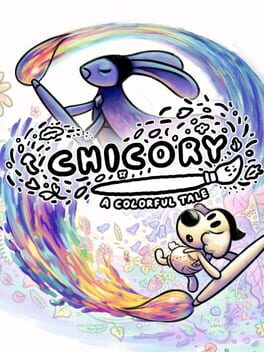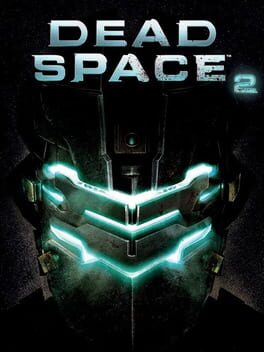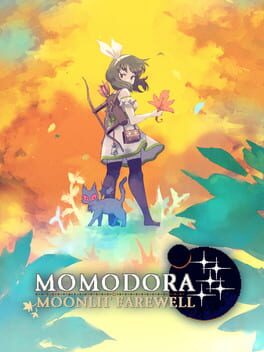Jelly_Channel
Bio
Just for reference, I use 2.5 as a "this game is completely average or unremarkable" rating.
Just for reference, I use 2.5 as a "this game is completely average or unremarkable" rating.
Badges

Gamer
Played 250+ games

GOTY '23
Participated in the 2023 Game of the Year Event

N00b
Played 100+ games

Noticed
Gained 3+ followers
Favorite Games
255
Total Games Played
000
Played in 2024
000
Games Backloggd
Recently Reviewed See More
Momodora: Moonlit Farewell is a culmination of the passion which has been poured into its predecessors. There are many places where it exceeds them and a handful of ways in which it falls short, but the latter is vastly overshadowed by the former. While I still firmly believe that Reverie Under the Moonlight is the premiere experience for this series of bite-sized metroidvanias, Moonlit Farewell is more than worthy to stand alongside it, and I sincerely hope that the team behind this is proud of their work and rewarded for their efforts. It goes without saying that I highly recommend this game, but this wouldn’t be a review of mine if I didn’t excessively elaborate:
Despite my many gripes with this game’s direct predecessor, Minoria, one aspect it strongly succeeded in was combat. Much can be said about the strength of the full-screen-slash parry’s capacity to trivialize certain rooms, but let it never be said that it wasn’t a damn satisfying parry. That’s the key word here for me: combat in Momodora games has never been particularly challenging by my metric, but it has always been satisfying. Minoria added additional layers of mechanical complexity which greatly improved the gamefeel of what was already there, and it is with great delight that I can say Moonlit Farewell has taken those improvements and ran with them (while reigning them in somewhat). Highest on the list are two new resources to manage: tried and true mana and stamina.
In previous Momodora games, items would be individual-use: you had X amount of heals/magic projectiles and after you used them up, you were done. This created a situation in which your best choice was to drop a thermonuclear payload the instant you walked into the room with no consequences and then carry on with the fight like usual. Moonlit Farewell instead ties all of these usual resources to a mana bar, meaning that you have to manage your resources and raw destructive potential a bit more carefully. Healing and explosive arrows (as an example) being tied to the same resource forces you to sacrifice safety for aggression: you can dish out some crazy damage, but in doing so you’re limiting your own ability to take it. Though this change limits the macabre glee that comes with nuking a boss frame one, it also adds some technical complexity to existing systems by combining them, making the game feel more cohesive as a whole. It’s smart, though not the only resource which marries existing ideas to great effect.
Unlike most games stamina in Moonlit Farewell is more of a defensive reserve than an offensive allowance. Outside of a heavily empowered arrow which activates when at full stamina - once again balancing safety with aggression - the only action which consumes the bar is dodging. Gone are the days of Kaho’s endless frame-perfect frollicking (which I did miss, admittedly) and Semilla’s perpetual parry-baiting; in their place, however, is a roll which rewards you for timing it like a parry by refunding the spent stamina back alongside a one-two-punch of dopamine in the form of gold flourish and a brief time-slow. While this does feel satisfying, it unfortunately brings us to my first key gripe.
One of my favorite aspects of the Momodora games is the No-Hit Bonus - if you’re skilled enough to beat a boss without taking a single hit of damage, you’ll get a unique (and often overpowered) reward for your efforts that you can’t find anywhere else in the game. It’s certainly a “rich get richer” mechanic in the sense that someone good enough to get the bonus probably doesn’t need it, but it adds an extra layer of challenge to boss fights and makes repeat playthroughs (which are essential to Momodora games) far more engaging. With that in mind, I’m sure you’ll understand my disappointment at the complete removal of this feature in Moonlit Farewell. With the inclusion of the perfect dodge and the stamina system, Moonlit Farewell is perfectly poised to encourage mechanical mastery and reward it when it's achieved, but it simply does not do so. As a result, I find myself less eager to engage with repeat playthroughs, which is rough for this series. This didn’t significantly harm my enjoyment of the game overall, mind you, but the exclusion of a system I greatly enjoyed does leave a slightly sour taste. What sweetens my palette in response, however, is the consistently delightful presentation.
Moonlit Farewell returns to the gorgeous pixel art of Reverie Under the Moonlight after the experimental 2.5D style that was used (quite well, in my opinion) in Minoria. I’ve always loved the character designs of this series, and that continued charm is on full display with this newly-improved stylistic iteration. Sprites are not only more detailed and expressive, but their range of expression through animation is far stronger too: Momo acrobatically swaps grips and angles when repeatedly firing her bow as opposed to Kaho’s more static, utilitarian archery, making her feel far more energetic and active. This aesthetic fluidity keeps traversal engaging, which heavily supplements the areas you’ll be traversing in.
Environments are richly-detailed, visually compelling, and - most important of all for a metroidvania - instantly distinct. The Momodora games have always boasted clear and communicative maps, but I found myself intuitively remembering the pathways within each area even on my first time through them - no map necessary. This is not, to say, however, that the map itself is not worthy of praise. It’s not revolutionary or anything, but having secrets be immediately marked on the map struck me as particularly kind. It could be argued that this level of signposting removes some of the magic that comes with the genre: the excitement of discovery is core to the metroidvania experience, so fully knowing there’s a secret in a room when you enter can dampen that excitement. While I don’t disagree with that notion, I found that my fondness for the convenience this feature added outweighed any missed potential.
No, my largest sore point with Moonlit Farewell is the missed potential in its writing. I’ve said before that the Momodora games are pleasantly bite-sized, so I’m not exactly expecting Wuthering Heights with regards to the narrative and characters. I would, however, like to actually get some time to bond with my traveling companion. Cereza is your trusty helper and resident Sigil Salescatgirl, and while you do get a small handful of moments to get to know her, they are both very few and very far between. When I’ve maxed my bond with Cereza after sharing exactly one day’s worth of meals, I can’t help but feel hungry for more. Minoria had the exact same problem with Semilla and Fran’s relationship: it’s hard to get attached when our primary cast has only had about fifteen lines of dialogue between them before their Big Dramatic Story Beat. It leaves the world feeling paper-thin, and Moonlit Farewell might even be a step backwards from Minoria in this respect. At least Fran chimed in with the occasional comment on a new area or significant story beat; Cereza will often appear after both with nothing new to say at all. Given that you’re mechanically encouraged to bond with her, it’s astounding to me how little dialogue she has. If I wasn’t fully aware how much time it takes to write and implement, I’d argue she and other characters should have twice as much.
That said, it speaks volumes that my largest problem with the game is that I want more optional dialogue. This has been a consistent desire of mine as it relates to the Momodora series - they are lacking only in comparison to my sheer gluttony. Moonlit Farewell is perhaps the most fine-tuned and polished entry in the Momodora series to date, and the improvements it makes on the experimental systems of the games before it are far-and-away full successes. I’ll be praying for the much-deserved success of this game, and eager to see what the minds behind it have in store next.
Despite my many gripes with this game’s direct predecessor, Minoria, one aspect it strongly succeeded in was combat. Much can be said about the strength of the full-screen-slash parry’s capacity to trivialize certain rooms, but let it never be said that it wasn’t a damn satisfying parry. That’s the key word here for me: combat in Momodora games has never been particularly challenging by my metric, but it has always been satisfying. Minoria added additional layers of mechanical complexity which greatly improved the gamefeel of what was already there, and it is with great delight that I can say Moonlit Farewell has taken those improvements and ran with them (while reigning them in somewhat). Highest on the list are two new resources to manage: tried and true mana and stamina.
In previous Momodora games, items would be individual-use: you had X amount of heals/magic projectiles and after you used them up, you were done. This created a situation in which your best choice was to drop a thermonuclear payload the instant you walked into the room with no consequences and then carry on with the fight like usual. Moonlit Farewell instead ties all of these usual resources to a mana bar, meaning that you have to manage your resources and raw destructive potential a bit more carefully. Healing and explosive arrows (as an example) being tied to the same resource forces you to sacrifice safety for aggression: you can dish out some crazy damage, but in doing so you’re limiting your own ability to take it. Though this change limits the macabre glee that comes with nuking a boss frame one, it also adds some technical complexity to existing systems by combining them, making the game feel more cohesive as a whole. It’s smart, though not the only resource which marries existing ideas to great effect.
Unlike most games stamina in Moonlit Farewell is more of a defensive reserve than an offensive allowance. Outside of a heavily empowered arrow which activates when at full stamina - once again balancing safety with aggression - the only action which consumes the bar is dodging. Gone are the days of Kaho’s endless frame-perfect frollicking (which I did miss, admittedly) and Semilla’s perpetual parry-baiting; in their place, however, is a roll which rewards you for timing it like a parry by refunding the spent stamina back alongside a one-two-punch of dopamine in the form of gold flourish and a brief time-slow. While this does feel satisfying, it unfortunately brings us to my first key gripe.
One of my favorite aspects of the Momodora games is the No-Hit Bonus - if you’re skilled enough to beat a boss without taking a single hit of damage, you’ll get a unique (and often overpowered) reward for your efforts that you can’t find anywhere else in the game. It’s certainly a “rich get richer” mechanic in the sense that someone good enough to get the bonus probably doesn’t need it, but it adds an extra layer of challenge to boss fights and makes repeat playthroughs (which are essential to Momodora games) far more engaging. With that in mind, I’m sure you’ll understand my disappointment at the complete removal of this feature in Moonlit Farewell. With the inclusion of the perfect dodge and the stamina system, Moonlit Farewell is perfectly poised to encourage mechanical mastery and reward it when it's achieved, but it simply does not do so. As a result, I find myself less eager to engage with repeat playthroughs, which is rough for this series. This didn’t significantly harm my enjoyment of the game overall, mind you, but the exclusion of a system I greatly enjoyed does leave a slightly sour taste. What sweetens my palette in response, however, is the consistently delightful presentation.
Moonlit Farewell returns to the gorgeous pixel art of Reverie Under the Moonlight after the experimental 2.5D style that was used (quite well, in my opinion) in Minoria. I’ve always loved the character designs of this series, and that continued charm is on full display with this newly-improved stylistic iteration. Sprites are not only more detailed and expressive, but their range of expression through animation is far stronger too: Momo acrobatically swaps grips and angles when repeatedly firing her bow as opposed to Kaho’s more static, utilitarian archery, making her feel far more energetic and active. This aesthetic fluidity keeps traversal engaging, which heavily supplements the areas you’ll be traversing in.
Environments are richly-detailed, visually compelling, and - most important of all for a metroidvania - instantly distinct. The Momodora games have always boasted clear and communicative maps, but I found myself intuitively remembering the pathways within each area even on my first time through them - no map necessary. This is not, to say, however, that the map itself is not worthy of praise. It’s not revolutionary or anything, but having secrets be immediately marked on the map struck me as particularly kind. It could be argued that this level of signposting removes some of the magic that comes with the genre: the excitement of discovery is core to the metroidvania experience, so fully knowing there’s a secret in a room when you enter can dampen that excitement. While I don’t disagree with that notion, I found that my fondness for the convenience this feature added outweighed any missed potential.
No, my largest sore point with Moonlit Farewell is the missed potential in its writing. I’ve said before that the Momodora games are pleasantly bite-sized, so I’m not exactly expecting Wuthering Heights with regards to the narrative and characters. I would, however, like to actually get some time to bond with my traveling companion. Cereza is your trusty helper and resident Sigil Salescatgirl, and while you do get a small handful of moments to get to know her, they are both very few and very far between. When I’ve maxed my bond with Cereza after sharing exactly one day’s worth of meals, I can’t help but feel hungry for more. Minoria had the exact same problem with Semilla and Fran’s relationship: it’s hard to get attached when our primary cast has only had about fifteen lines of dialogue between them before their Big Dramatic Story Beat. It leaves the world feeling paper-thin, and Moonlit Farewell might even be a step backwards from Minoria in this respect. At least Fran chimed in with the occasional comment on a new area or significant story beat; Cereza will often appear after both with nothing new to say at all. Given that you’re mechanically encouraged to bond with her, it’s astounding to me how little dialogue she has. If I wasn’t fully aware how much time it takes to write and implement, I’d argue she and other characters should have twice as much.
That said, it speaks volumes that my largest problem with the game is that I want more optional dialogue. This has been a consistent desire of mine as it relates to the Momodora series - they are lacking only in comparison to my sheer gluttony. Moonlit Farewell is perhaps the most fine-tuned and polished entry in the Momodora series to date, and the improvements it makes on the experimental systems of the games before it are far-and-away full successes. I’ll be praying for the much-deserved success of this game, and eager to see what the minds behind it have in store next.





